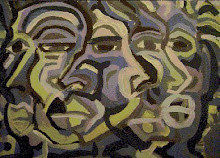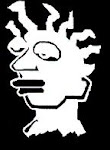 Every family of hues (in the above image) shares some overlap.
Every family of hues (in the above image) shares some overlap.This represents where and when certain groups of individuals share a common trait, history or ideology.
While each hue could be said to represent a sort of commonality of a certain group, the overlap also occurs between other groups or individuals from another hue family.
(okay... it's a simple model that can't connect all similarities between all groups, but you get the point.)
 When I used to live in Cali., I would have a poker night on Wednesdays that would take place every other week.
When I used to live in Cali., I would have a poker night on Wednesdays that would take place every other week.Three girls would cook all the food, I'd provide the drinks (from a selection of 387 different kinds or brands of liquors), and the easy girls would always be in the house.
Most games would start off at 9:00pm with us watching the opening scenes of Menace To Society - until Sam Jackson shoots some guy at a card game and asks, "Do you owe me money...?" The guy would say, "Hell no...but here you go...". We'd laugh and begin to deal the cards.
Pots weren't that big, usually two to four hundred dollars, so no one was trying to make their rent from a card game.
Since I was "the house", I could keep two dollars from every pot. (This was kept to pay off "Bad Beat" jackpots on a hand of a Boat (Kings High). If no one won the jackpot, those at the last table would split the money.
But this last table was interesting.
Usually it would be the "kings" of different cliques, gangs or groups.
In most other settings, most of these people would be sworn enemies.
But at a card game at three or four in the morning - these were just a bunch of guys relating there common anxieties of keeping there hustles (and people) intact.
The above triangle model suggests the commonality of those at the top of their game.
(The red line is the gap necessary between a leader and those being led.)
While part of their group, they were still alone in that group.
These guys had more in common (presently) with each other than they did with those in their group.
While their histories were tied to (and similar to) their group, the dynamics of that group dictated that their only way of relating their concerns was to someone at the same point in a different group.
(Okay, I haven't refined these models yet.)














No comments:
Post a Comment